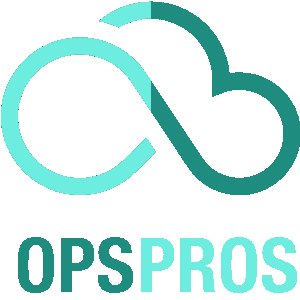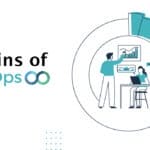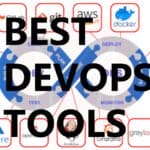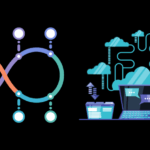
In a DevOps environment, effective monitoring is essential for ensuring efficient and reliable software delivery. Monitoring allows DevOps teams to identify and address issues before they impact users, as well as optimize processes to enhance overall efficiency. In this article, we will explore best practices for DevOps monitoring, the various tools available, critical metrics to monitor, and the benefits of automation. Additionally, we will highlight industry examples and trends to keep an eye on.
Key Takeaways
- DevOps monitoring is critical for ensuring efficient and reliable software delivery.
- Effective monitoring strategies can help optimize processes and enhance overall efficiency.
- Choosing the right monitoring tools and understanding what data to monitor is crucial for success.
- Automation and real-time monitoring can significantly improve DevOps processes.
- Industry examples and trends can provide valuable insights and inform best practices.
Why is DevOps Monitoring Essential?
DevOps monitoring is critical for ensuring efficient and reliable software delivery. Without proper monitoring strategies in place, DevOps teams face the risk of missing critical issues that can result in downtime, poor performance, and dissatisfied customers. By implementing effective monitoring practices, businesses can identify and address issues before they become major problems, allowing for faster response times, improved performance, and increased availability.
Effective DevOps monitoring strategies involve setting clear goals, using appropriate tools and techniques, and establishing efficient monitoring processes. By doing so, teams can ensure that they are capturing the right data and that it is easily accessible and actionable. This can help businesses to optimize their processes, improve their customer experience, and stay ahead of their competitors.
Choosing the Right Monitoring Tools
Monitoring tools are critical components of any DevOps environment. They provide real-time insights into system performance and help teams identify and remediate issues quickly. With a plethora of options available, selecting the right monitoring tools can be a daunting task.
When selecting monitoring tools, it’s essential to consider the specific needs of your organization. Some tools may be better suited to specific technologies or environments, while others may offer more advanced features or customization options. Here are some factors to consider when choosing the right monitoring tools for your DevOps environment:
| Factor | Description |
|---|---|
| Scalability | Consider whether the tool can scale to your organization’s needs. Will it be able to handle increasing data volumes as your organization grows? |
| Integration | Select tools that integrate with your existing DevOps stack. This will help streamline processes and reduce the need for manual configuration. |
| Customization | Choose tools that allow for customization to meet your specific monitoring needs. This includes the ability to create custom dashboards, alerts, and reports. |
| Usability | Look for tools that are easy to use and provide a clear, intuitive user interface. This will reduce the need for extensive training and allow teams to start using the tool quickly. |
| Cost | Consider the budget for your organization and select tools that provide the best value for their cost. This includes factoring in the total cost of ownership, including maintenance and support fees. |
Some popular monitoring tools for DevOps environments include:
Prometheus
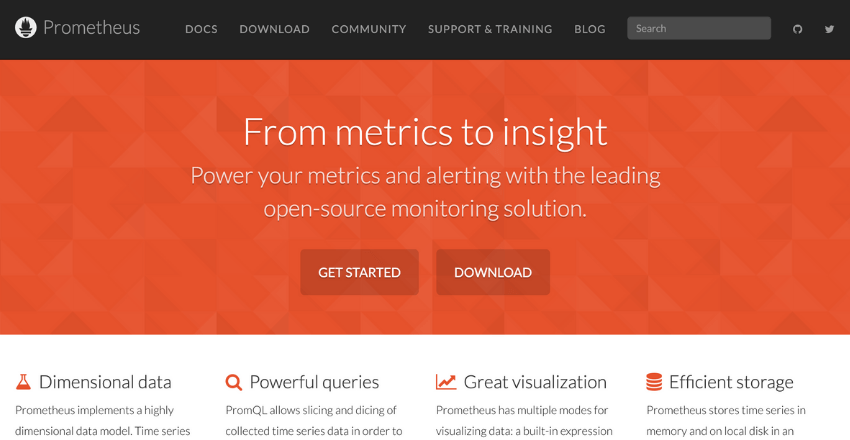
An open-source monitoring solution with a focus on time-series data. It’s known for its scalability and support for multi-dimensional data collection.
Grafana

A visualization and analytics platform that integrates with various data sources, including Prometheus, Elasticsearch, and more. It provides customizable dashboards and is known for its ease of use.
Nagios

An open-source tool for monitoring network services, hosts, and devices. It provides customizable alerts and notifications and is known for its robust plugin architecture.
Zabbix

A monitoring solution that provides real-time monitoring, alerting, and visualization. It supports various data sources, including SNMP, JMX, and more.
Ultimately, the best monitoring tools for your DevOps environment will depend on your specific requirements. By considering factors such as scalability, integration, customization, usability, and cost, you can select tools that provide the best value for your organization.
Essential Data to Monitor in a DevOps Environment
Monitoring plays a crucial role in DevOps environments, providing the necessary feedback to ensure that software delivery remains efficient and reliable. However, identifying the right data points to monitor can be challenging. Here are some essential metrics to consider:
- Response time: This measures the time taken for an application to respond to a user request. It is a critical metric for ensuring user satisfaction, and deviations from expected response times can indicate issues that need to be addressed.
- Throughput: This metric measures the amount of data or transactions processed by an application over time. It is essential for identifying potential bottlenecks and ensuring that the system can handle expected loads.
- Error rates: Tracking the frequency and types of errors encountered by an application is crucial for maintaining system stability and identifying bugs that need to be addressed.
- Resource utilization: Monitoring resources such as CPU, memory, and disk usage can help identify potential performance issues and ensure that resources are being used efficiently.
- Availability: Tracking availability metrics such as uptime and downtime can provide insight into the reliability of the system and help ensure that agreed-upon service level agreements (SLAs) are being met.
Implementing monitoring strategies that track these essential metrics can help ensure a reliable and efficient DevOps environment and identify issues before they impact users.
Leveraging Monitoring Frameworks
Monitoring frameworks can make DevOps monitoring much more streamlined and efficient. By automating certain aspects of the monitoring process, these frameworks help reduce the workload and improve the accuracy of monitoring data.
Popular Monitoring Frameworks
One popular monitoring framework is Prometheus, an open-source tool that is often used in Kubernetes environments. Prometheus allows users to monitor various metrics, including CPU usage, memory usage, and network activity. It also supports alerting, making it easier to identify issues before they become major problems. Another popular monitoring framework is Grafana, a tool that helps visualize and analyze monitoring data. Grafana can be used with various data sources, including Prometheus, to create custom dashboards and reports.
Other monitoring frameworks worth considering include ELK Stack, Zabbix, and Nagios. Each of these frameworks has its own strengths and weaknesses, so it’s important to evaluate them carefully before making a decision.
Integration with Existing Workflows
One of the key benefits of monitoring frameworks is their ability to integrate with existing workflows. Many monitoring frameworks offer APIs and plugins that allow them to be easily integrated with other tools and platforms. This can help streamline the monitoring process and reduce the workload for DevOps teams.
Choosing the Right Monitoring Framework
When choosing a monitoring framework, there are several factors to consider. First, consider the specific needs of your DevOps environment and the metrics that are most important to monitor. Next, evaluate the features and capabilities of each monitoring framework, including its compatibility with other tools and platforms. Finally, consider the cost and support options for each framework, as well as the level of expertise required to implement and maintain it.
Monitoring frameworks can be powerful tools for DevOps teams looking to improve their monitoring capabilities. By automating certain aspects of the monitoring process and integrating with existing workflows, these frameworks can help reduce the workload and improve the accuracy of monitoring data. When choosing a monitoring framework, be sure to consider the specific needs of your DevOps environment, as well as the features, compatibility, cost, and support options for each framework.
Automating Monitoring Processes

Automating monitoring processes is a critical component of effective DevOps monitoring practices. Automation ensures that teams can identify issues before they result in production incidents, minimize downtime, and improve the overall quality of the software delivery process.
By automating routine monitoring tasks, organizations can free up time for their teams to focus on more complex issues that require human intervention. Automation also reduces the risk of human error and ensures that monitoring processes are consistent and repeatable.
Benefits of Automation
Automation provides several benefits when it comes to DevOps monitoring practices. It enables teams to:
- Detect issues before they impact production
- Identify problems that are hard to spot manually
- Ensure that monitoring processes are consistent and reliable
- Free up time for IT staff to focus on more pressing issues
By automating monitoring processes, teams can save time and resources, reduce human error, and improve the overall quality of their software delivery pipeline.
How to Implement Automated Monitoring
Automating monitoring processes requires the use of appropriate monitoring tools, scripts, and integrations. Teams should follow these steps to implement automated monitoring effectively:
- Identify the areas that need to be automated
- Select the right tools for each area based on specific needs
- Set up the tools to work together
- Develop scripts or code to handle the automation logic
- Test the automation before putting it into production
Once automation is implemented, teams should monitor their automated processes to ensure they continue to function as intended. Regular reviews and maintenance are key to sustaining an effective automated monitoring system.
With the right tools and techniques, DevOps teams can benefit greatly from automating their monitoring processes. It allows them to identify and resolve issues faster, improve overall software quality, and deliver better results to end-users.
Real-Time Monitoring and Alerting
Real-time monitoring is crucial for ensuring the stability and performance of applications in a DevOps environment. With the rapid pace of deployments and changes, it’s essential to detect and address issues as soon as they arise. This is where real-time monitoring and alerting come into play.
Monitoring tools such as Nagios, Zabbix, and Prometheus offer real-time monitoring capabilities and can send alerts when specific thresholds are breached. These alerts can be sent via email, SMS, or other communication channels, allowing DevOps teams to respond quickly and effectively to issues.
Real-time monitoring also enables teams to proactively identify and resolve potential issues before they escalate. By monitoring key metrics such as CPU usage, memory consumption, and network traffic in real-time, teams can detect anomalies and take corrective action before they affect application performance.
Real-Time Monitoring and Alerting Best Practices
Implementing real-time monitoring and alerting can be challenging, but following best practices can help ensure success:
- Define clear alert thresholds: Establish accurate and relevant thresholds for alerts to avoid false positives and ensure that alerts are triggered only when necessary.
- Use multiple alert channels: Use multiple communication channels such as email, SMS, and chat to ensure that alerts are seen and acted upon quickly.
- Monitor critical metrics: Monitor key metrics such as response time, latency, and error rates to detect issues early and prevent downtime.
- Automate responses: Automate responses to common issues to minimize downtime and improve incident response times.
- Continuously refine monitoring: Continuously review and refine your monitoring strategy to ensure that it remains effective and relevant over time.
By following these best practices, DevOps teams can ensure that real-time monitoring and alerting capabilities are implemented effectively and contribute to the stability and reliability of their applications.
Continuous Improvement through Monitoring

Monitoring is critical to enabling continuous improvement in a DevOps environment. By analyzing monitoring data, teams can identify bottlenecks and areas for improvement in their processes and systems. However, to achieve continuous improvement, organizations must establish effective monitoring practices.
One best practice for continuous improvement is to set clear monitoring goals. Teams should define the metrics they want to monitor and use this data to identify areas for improvement. Metrics such as deployment frequency, lead time, and change failure rate can provide valuable insights into the efficiency of DevOps processes.
Another best practice is to establish a culture of continuous monitoring. Teams should monitor their systems and applications continuously to detect issues as soon as they arise and prevent them from becoming larger problems. This requires the use of real-time monitoring and alerting tools that can quickly identify and notify the team of any issues.
Automation is also critical to continuous improvement through monitoring. Automating monitoring tasks such as data collection, analysis, and alerting can help teams detect issues quickly and respond to them faster. This can improve the overall efficiency of DevOps processes and reduce the risk of downtime or other issues.
Finally, it’s important to use monitoring data to drive decision-making and continuous improvement. Teams should analyze the data they collect from monitoring tools to identify areas for optimization and improvement. This can help teams optimize their processes, reduce waste, and improve overall efficiency.
Monitoring in Cloud-Based Environments
As more organizations move their infrastructure to the cloud, monitoring becomes critical to ensuring the performance and availability of applications. Cloud-based environments can have unique monitoring challenges that require specific strategies, tools, and techniques.
One of the main challenges of cloud-based monitoring is the dynamic nature of the cloud. Resources can be provisioned and de-provisioned automatically, which means monitoring systems need to be able to detect these changes and adjust monitoring accordingly. Additionally, applications can be distributed across multiple cloud providers and regions, further complicating the monitoring process.
To address these challenges, DevOps teams need to adopt monitoring strategies that leverage cloud-specific monitoring solutions. Some of the best practices for cloud-based monitoring include:
Use cloud-native monitoring tools
Cloud providers offer monitoring tools that are optimized for their specific infrastructure. These tools can provide deep insights into usage, performance, and resource utilization.
Monitor from the user’s perspective
End-user monitoring is critical in cloud-based environments as users can access applications from a variety of devices and locations. Monitoring from the user’s perspective helps ensure that applications are delivering a consistent experience.
Track system and application logs
Cloud-based systems generate a large volume of logs that can provide crucial insights into performance and usage. Monitoring log data can help identify potential issues before they impact users.
Other best practices for cloud-based monitoring include setting clear monitoring goals, establishing effective monitoring processes, and leveraging automation to streamline monitoring workflows.
Overall, monitoring in cloud-based environments is an essential part of DevOps monitoring. By adopting cloud-specific monitoring strategies and tools, DevOps teams can ensure that their applications are performing optimally and delivering a great user experience.
Best Practices for DevOps Monitoring

DevOps monitoring practices are critical for ensuring efficient and reliable software delivery. Following best practices helps teams detect and mitigate issues before they impact end-users, minimize downtime, and continuously improve processes. Here are some best practices for effective DevOps monitoring:
Set Clear Monitoring Goals
Defining clear monitoring objectives is essential for monitoring success. Teams must identify the key performance indicators (KPIs) critical for their application or infrastructure and document them in a shared location. Common KPIs include response time, system availability, error or failure rates, and user engagement metrics. Setting clear goals helps teams identify the appropriate monitoring tools and techniques required to achieve them.
Use the Right Tools and Techniques
Choosing the right monitoring tools and techniques is critical for effective DevOps monitoring. Teams must evaluate their infrastructure and application monitoring requirements and use the appropriate tools, such as APMs (Application Performance Monitoring), log management tools, network monitoring tools, and more. Automating monitoring tasks is also essential for reducing manual effort, ensuring timely notification, and freeing up time for other critical tasks.
Establish Effective Monitoring Processes
Establishing efficient monitoring processes ensures timely and effective issue resolution. Teams must develop a process for incident management, including how to communicate and escalate alerts, and how and when to involve other teams. Developing a runbook with troubleshooting procedures, escalation paths, and contact information is also crucial for ensuring consistent issue resolution.
Other DevOps monitoring practices include investing in real-time monitoring and alerting, leveraging monitoring frameworks, and collecting and analyzing monitoring data to drive continuous improvement.
Trends in DevOps Monitoring
DevOps monitoring is a critical factor in achieving efficient and reliable software delivery. By implementing effective monitoring strategies, organizations can ensure that their systems are performing optimally, and quickly identify and correct issues as they arise. Let’s take a look at some industry examples and emerging trends in DevOps monitoring.
Adopting Monitoring as Code
Many organizations are now adopting monitoring as code (MaC) to enhance their monitoring capabilities. MaC allows teams to use code to define and manage their monitoring infrastructure, making it easier to scale and automate monitoring processes. With MaC, teams can define metrics, alerts, and dashboards as code, which can then be version controlled and reviewed through the same processes as other codebase changes. This approach helps ensure consistency and accuracy throughout the monitoring infrastructure.
Using Artificial Intelligence and Machine Learning
Artificial intelligence (AI) and machine learning (ML) technologies are making waves in the DevOps monitoring world. By leveraging these technologies, teams can automate the analysis of monitoring data, identify patterns, and predict future issues. This approach can help reduce the time and effort required to identify and resolve issues, making it easier to maintain high levels of system performance.
Emphasizing Observability
Observability is the ability to infer the internal state of a system based on its external outputs. It’s a key concept in DevOps monitoring, as it enables teams to monitor and understand complex systems with many interdependent parts. Observability emphasizes the importance of high-quality telemetry data, which provides visibility into the performance of individual components of a system. By leveraging telemetry data, teams can diagnose issues more quickly and make data-driven decisions to optimize system performance.
Partnering DevOps with Security
DevSecOps, the integration of security into the DevOps process, is becoming increasingly important in DevOps monitoring. By partnering DevOps with security teams, organizations can ensure that their monitoring processes are aligned with security considerations, and that potential security threats are identified and remediated quickly. DevSecOps requires a shared responsibility and mindset between development, operations, and security teams to enable a more secure, reliable, and compliant approach to software delivery.
Overall, implementing effective DevOps monitoring practices is essential for optimizing system performance, maintaining high levels of reliability, and driving continuous improvement. By keeping up with emerging trends and best practices, organizations can stay ahead of the curve and ensure that their monitoring practices remain effective and efficient.
Conclusion

Effective DevOps monitoring is an essential practice for ensuring efficient and reliable software delivery. By implementing the right monitoring strategies and tools, teams can gain valuable insights into their delivery processes, identify potential issues, and optimize their workflows.
It’s important to choose the right monitoring tools that fit specific monitoring needs. Teams should also leverage monitoring frameworks and automate monitoring processes wherever possible to save time and reduce manual errors.
Real-time monitoring and alerting in a DevOps environment is crucial for identifying and mitigating potential performance issues. By monitoring key metrics such as application performance and infrastructure health, teams can take corrective measures quickly and prevent downtime.
Finally, continuous improvement through monitoring is an important aspect of DevOps. Teams should analyze monitoring data to identify opportunities for optimization and enhancement to their delivery processes.
By staying up-to-date with industry trends and best practices, DevOps teams can continue to improve their monitoring practices and ensure the delivery of high-quality software products.
FAQ – DevOps Monitoring

Q: What is DevOps Monitoring?
A: DevOps monitoring is the process of monitoring and observability in the DevOps culture. It involves using various tools and practices to gain visibility into the performance and health of the software development and deployment pipeline.
Q: Why is DevOps Monitoring important?
A: DevOps monitoring is important because it provides real-time data on the health and performance of the software system. It helps in identifying and resolving issues quickly, ensuring smooth operations and efficient delivery of software.
Q: What are the types of monitoring in DevOps?
A: There are various types of monitoring in DevOps, including infrastructure monitoring, application performance monitoring, synthetic monitoring, service monitoring, and continuous monitoring. Each type focuses on monitoring different aspects of the system.
Q: What are the top DevOps monitoring tools?
A: Some of the top DevOps monitoring tools include Splunk, AWS CloudWatch, Prometheus, Datadog, New Relic, Nagios, ELK Stack, and Zabbix. These tools offer a wide range of features and capabilities for monitoring and observability in DevOps environments.
Q: How does DevOps monitoring help in automation?
A: DevOps monitoring helps in automation by providing real-time data and insights into the software system. This data can be used to trigger automated actions and responses, such as scaling up or down resources based on demand, alerting the team about issues, or automatically deploying bug fixes.
Q: What are the common use cases of DevOps monitoring?
A: Some common use cases of DevOps monitoring include detecting and resolving performance bottlenecks, ensuring high availability of the system, identifying and addressing security vulnerabilities, optimizing resource allocation, and tracking key metrics for business success.
Q: How does DevOps monitoring differ from traditional monitoring?
A: DevOps monitoring differs from traditional monitoring in its focus on automation, continuous monitoring, and holistic visibility into the entire software delivery pipeline. It emphasizes collaboration, feedback loops, and the ability to quickly respond to changes.
Q: What is the role of a monitoring platform in DevOps?
A: A monitoring platform in DevOps serves as a centralized tool or system that collects and analyzes data from various sources, such as infrastructure, applications, and logs. It provides a single source of truth for monitoring and observability, enabling teams to gain insights and take action based on the data.
Q: How does DevOps monitoring support observability?
A: DevOps monitoring supports observability by providing real-time data and insights into the system’s behavior, performance, and health. It helps teams gain visibility into various components of the system, enabling them to understand how different parts interact and identify potential issues.
Q: How can DevOps monitoring improve the overall software delivery process?
A: DevOps monitoring improves the overall software delivery process by identifying and resolving issues early on, optimizing performance and resource allocation, ensuring high availability, and enabling continuous improvement through real-time data and insights. It helps in delivering high-quality software at a faster pace.
James is an esteemed technical author specializing in Operations, DevOps, and computer security. With a master’s degree in Computer Science from CalTech, he possesses a solid educational foundation that fuels his extensive knowledge and expertise. Residing in Austin, Texas, James thrives in the vibrant tech community, utilizing his cozy home office to craft informative and insightful content. His passion for travel takes him to Mexico, a favorite destination where he finds inspiration amidst captivating beauty and rich culture. Accompanying James on his adventures is his faithful companion, Guber, who brings joy and a welcome break from the writing process on long walks.
With a keen eye for detail and a commitment to staying at the forefront of industry trends, James continually expands his knowledge in Operations, DevOps, and security. Through his comprehensive technical publications, he empowers professionals with practical guidance and strategies, equipping them to navigate the complex world of software development and security. James’s academic background, passion for travel, and loyal companionship make him a trusted authority, inspiring confidence in the ever-evolving realm of technology.
